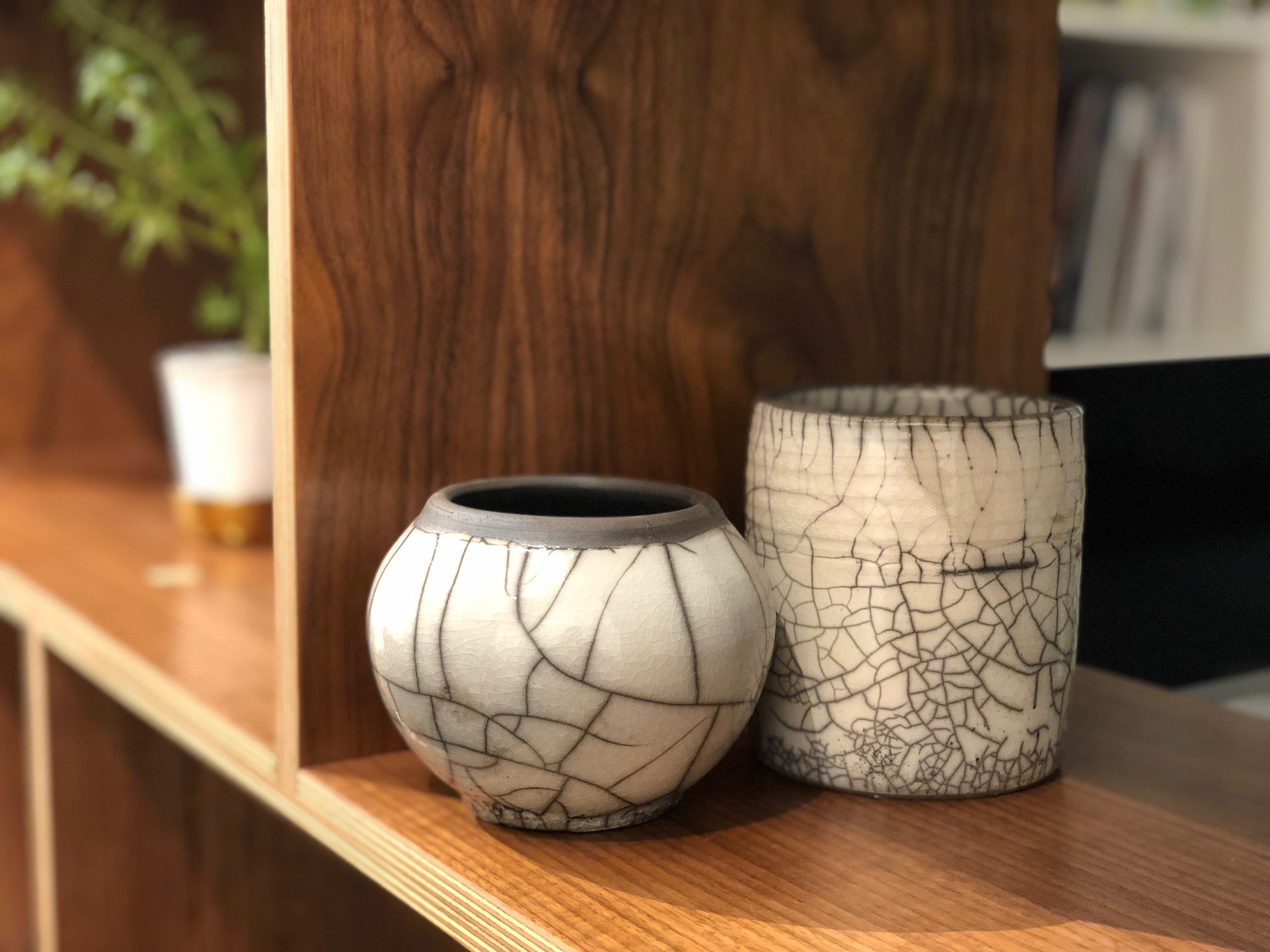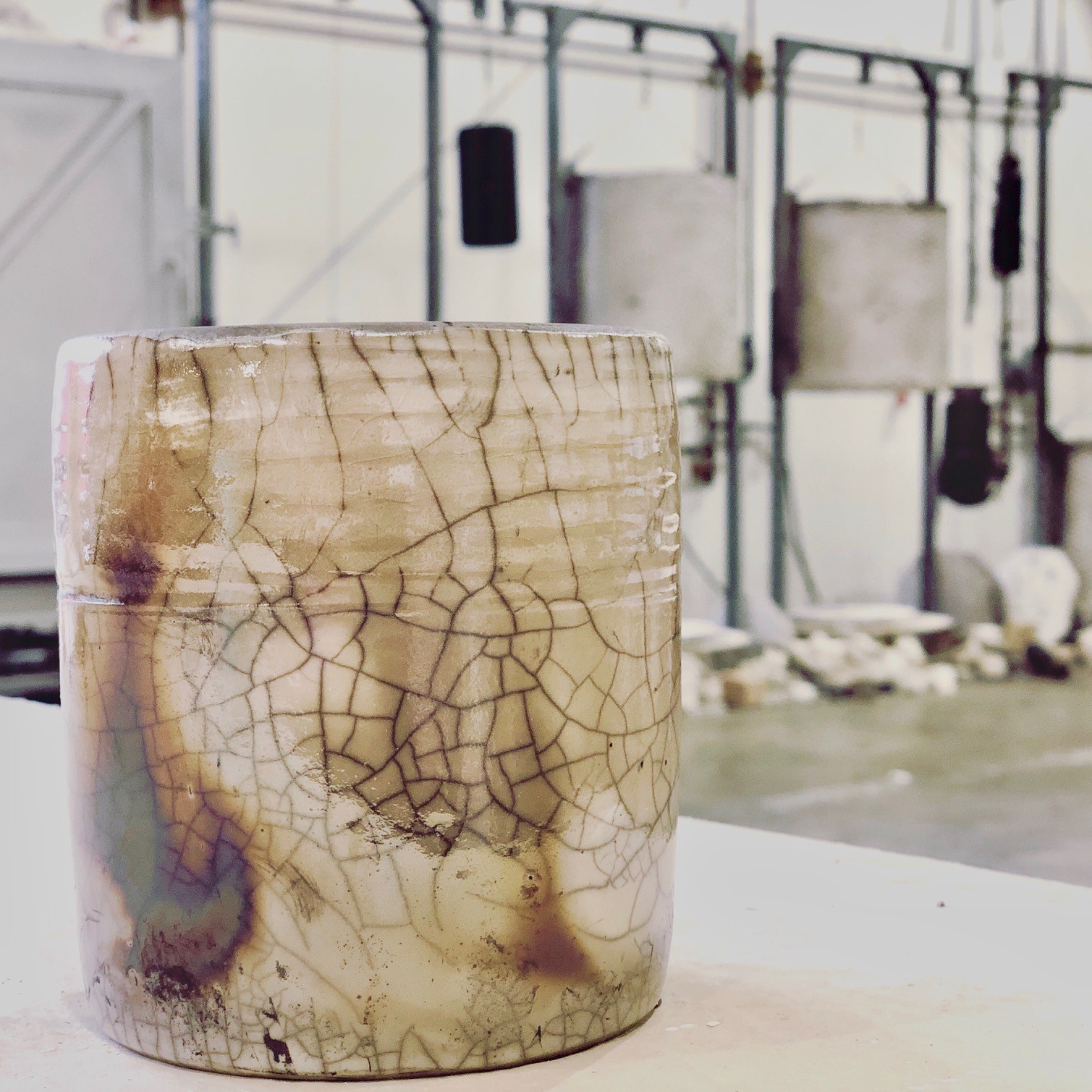Recently, I joined a pottery studio. When working with clay, there is always an element of the unexpected. I’ve explored unforeseen creative events, capturing ‘happy accidents’—highlighting imperfections. This has led me to examine artistic philosophies, creative guidelines, and influences in the pursuit of perfect imperfection. So, how do we encourage happy accidents? Here are four guidelines from highly respected artists whose advice has withstood the test of time.
Michelangelo - The true work of art is but a shadow of divine perfection.
Perfection is a state of being without flaws, of being complete. If we were flawless or complete, we would be unable to progress or change. Nature is constantly changing, it is perfectly imperfect. As artists, we must experience some form of change to keep creating work that reflects and exhibits our increased knowledge, understanding, appreciation and beauty. Thus, we do not seek perfection in our art but rather, that meaning and expression found through the pursuit of perfect imperfection.
Paul Soldner - There can be no fear of losing what was once planned, and there must be an urge to grow along with the discovery of the unknown. Make no demands, expect nothing, follow no absolute plan, be secure in change, learn to accept another solution and, finally, prefer to gamble on your own intuition.
Are we willing to ‘let go’ and let the many elements set in motion take effect naturally? Can we accept and enjoy “what is” rather than “what should have been”?
Ralph Bacerra - I am not making any statements—social, political, conceptual, or even intellectual. There is no meaning or metaphor. I am committed more to the idea of pure beauty.
Ralph Bacerra made enduring work designed to be enjoyed rather than analyzed. His work is complex on many levels.
M. C. Richards - You are not centering the clay. You are centering yourself.
Claywork changes the artist as the art object is made. Our dialog with clay is a means of self-realization, and Richards reminds us to utilize intuition to transform emotions into clay art. We create first from the heart and soul; the mind and hands follow.
Here are seven tactics of creativity worth considering in the pursuit of perfect imperfections:
Live in the Moment - Have you ever tried to duplicate a happy accident? Some variables may escape you. Observe the phenomenon carefully and look beyond the accident. Borrowing from jazz, classical music, literature and dramatic arts - improvisational techniques apply.
Right or left brain first? - The artistic mind differs in its approach. Once you’ve mastered the basics of your expression (left brain), art evolves from the intuitive right brain, the spirit, and the heart.
Look for inspiration or new ideas - Don’t just ‘look’ but ‘see.’ Carefully and deliberately take note of what is truly there before you, and not in your imagination or memory. Use all your senses, and you will discern unforeseen, new and exciting outcomes. Additionally, scan your personal memories & experiences for inspiration. Yours are unique - take advantage of that.
Know your art history - It helps to know where we’ve been artistically, not just visually, but also in performing arts, and architecture. Learn from past discoveries, traditions and innovations. Then, make them your own.
Record your ideas - Carry a sketchbook or digital camera to record meaningful ideas as they present themselves. You never know where or when inspiration will appear. If you don’t capture them, they will be lost in time.
Cultivate a think-tank - Gather a small group of creative thinkers around you. Exchange ideas regularly without judgment or prejudice. Serve as a catalyst for each other’s pursuits.
Keep current - Visit galleries and other creative studios often. Be aware of cycles in contemporary architecture, music, theater, and literature.
We all have many influences; some just happen, while others are chosen. My recent interest in pottery has led me to the seven characteristics common to all Zen art. These have become directives in my approach to ceramics and life, in general.
Asymmetry (Fukinsei)
No rule - Irregular, uneven, unbalanced, informal, odd numbers
Freedom from formal form, a negation of perfectionSimplicity (Kanso)
No complexity - Sparse, not cluttered, boundless, unrestrained
Unity of no form and no colorAustere Sublimity (Kodo)
No rank - Advanced in years and life, astringent, sublime
Sabi = ancient, graceful. Wabi = poverty surpassing richesNaturalness (Shizen)
No mind - Not artificial, nothing forced, unstrained
No conscious effort in creating, self without formSubtle Profundity (Yugan)
No bottom - Deep reserve, endless reverberation beyond expression
Content in present more by implication than elaborate delineation.Freedom from Attachment (Datsuzoku)
No hindrance - Unrestricted freedom from any rules, habits, conventions, customs
Unattached to thingsTranquility (Sejaku)
No stirring - Quiet, calm, full of composure
Being at rest amidst motion
Look to elevate the spirit and fulfill the heart in your work. Seek perfect imperfections. Rejoice in the Happy Accidents.
*Excerpts from Naked Raku and Related Bare Clay Techniques, by Eduardo Lazo



